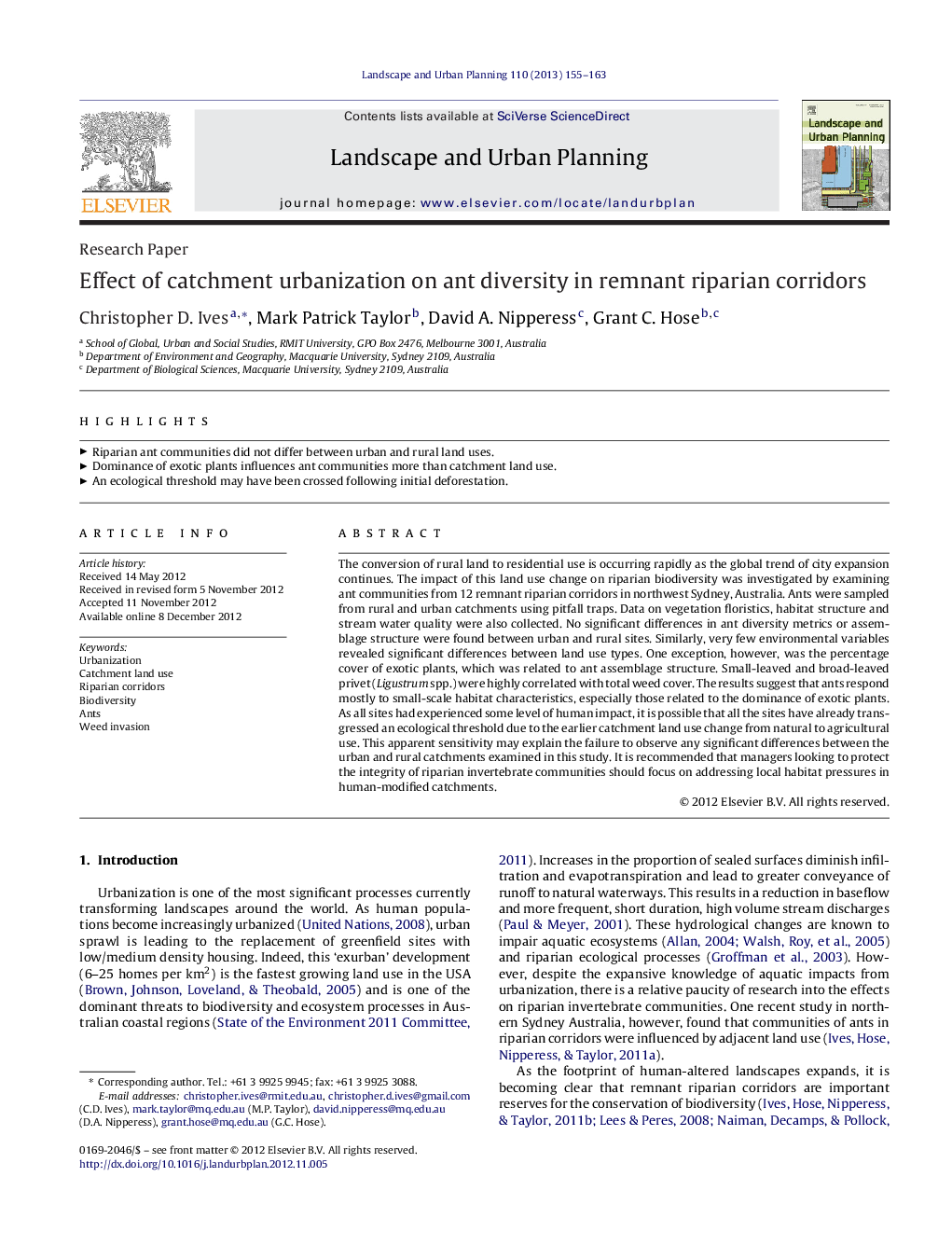| Article ID | Journal | Published Year | Pages | File Type |
|---|---|---|---|---|
| 1049272 | Landscape and Urban Planning | 2013 | 9 Pages |
The conversion of rural land to residential use is occurring rapidly as the global trend of city expansion continues. The impact of this land use change on riparian biodiversity was investigated by examining ant communities from 12 remnant riparian corridors in northwest Sydney, Australia. Ants were sampled from rural and urban catchments using pitfall traps. Data on vegetation floristics, habitat structure and stream water quality were also collected. No significant differences in ant diversity metrics or assemblage structure were found between urban and rural sites. Similarly, very few environmental variables revealed significant differences between land use types. One exception, however, was the percentage cover of exotic plants, which was related to ant assemblage structure. Small-leaved and broad-leaved privet (Ligustrum spp.) were highly correlated with total weed cover. The results suggest that ants respond mostly to small-scale habitat characteristics, especially those related to the dominance of exotic plants. As all sites had experienced some level of human impact, it is possible that all the sites have already transgressed an ecological threshold due to the earlier catchment land use change from natural to agricultural use. This apparent sensitivity may explain the failure to observe any significant differences between the urban and rural catchments examined in this study. It is recommended that managers looking to protect the integrity of riparian invertebrate communities should focus on addressing local habitat pressures in human-modified catchments.
► Riparian ant communities did not differ between urban and rural land uses. ► Dominance of exotic plants influences ant communities more than catchment land use. ► An ecological threshold may have been crossed following initial deforestation.
